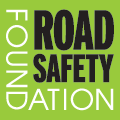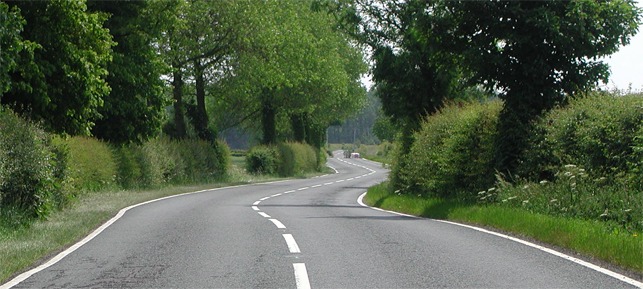SIMPLE MEASURES SAVE LIVES
More than 300 people in the UK are alive today or have avoided the prospect of a lifetime of special care because just 15 roads have had simple improvements put in place, according to this year’s tracking survey by the Road Safety Foundation. On these 15 roads alone, fatal and serious crashes dropped 62% from 494 to 190.
Entitled Simple Measures Save Lives the report shows that elementary safety measures are paying back the costs of investment in an average of 10 weeks. The savings are worth over £50 million annually to emergency services, the NHS, local authority care, businesses and families.
This year’s most improved road is an 11km section of the A4128 through Buckinghamshire from Great Missenden to High Wycombe. Over the last two surveys, it has moved from one of Britain’s highest risk roads with to one of the safest. Over this time, fatal and serious collisions dropped by 89%, from 19 to 2.
This non-primary single carriageway A road is a busy route connecting local villages, carrying high volumes of commuter traffic. Safety measures put in place include new speed restrictions; and an innovative use of solar-powered road studs to improve night-time visibility.
Of the UK’s 15 most improved roads, almost half are single carriageways, and are spread across the country. Consultation with road authorities on these sections found that common crash types were single vehicles losing control at bends and rear-end collisions at junctions and during busy periods.
Improvements on the 15 roads include:
- signing, markings and the design and layout of junctions
- speed limit review and the use of speed enforcement
- resurfacing, including the use of high-friction, anti-skid treatments on bends
- central safety barriers
On these 15 improved routes, Dr Joanne Hill says: “These are practical, largely inexpensive solutions which will pay back the costs of investment in an average of 10 weeks – a 500% rate of return in the first year alone – and go on saving lives and saving money for the nation for many years to come. Much of this remedial work can be done as part of routine maintenance.”
Only one major scheme features in the top 15 list of most improved sections – the notorious “Cumberland Gap”, a 6 mile section of M6 motorway between England and the Scottish Border. After 16 years of delays, the motorway was finally completed in 2008. The resulting drop in deaths and serious injuries was dramatic – down from 15 to 2. Dr Hill comments: “The lesson of the ‘Cumberland Gap’ is that motorways are Britain’s safest roads and that there are safety dividends from upgrading deficits in safety features on busy dual carriageways.”
Britain’s persistently high risk roads are concentrated in the North-West and East Midlands. Routes in these areas are rural single carriageway, challenging to drive, with frequent blind corners and sweeping bends. Lighter traffic allows higher speeds and opportunities for safe overtaking can be restricted.
Topping the list, once more, is the A537 Macclesfield to Buxton, known nationally as the Cat and Fiddle. This 12km section across the Peak District National Park has seen crashes rise by 62% in the last three years, with the equivalent of three fatal or serious injury crashes for every km. A 50mph single carriageway, the route has severe bends, steep falls from the carriageway and is edged by dry-stone walls or rock face for almost all of its length.
Even with motorcycle collisions removed, the same road tops Britain’s 10 high risk routes. The remainder are not traditionally scenic routes or tourist areas, but a combination of rural and more built-up sections, with frequent junctions, varying speed limits and used heavily by local commuters. These include the A18 between the A16 (Ludborough) to A46 (Laceby); A577 Ormskirk to the M58 J5 (Skelmersdale); and additional roads around Bolton, Wakefield, Worksop, Knottingley, Nantwich and Hastings. These 10 roads are mainly in the north of the country, with almost all in the North-West, Yorkshire and the Humber and the East Midlands.
Dr Joanne Hill concludes: “Busy, high-risk roads can be eliminated affordably with high economic returns. Over the last three years, the number of fatal crashes on motorways and A roads has dropped by 21%. Over the past decade average risk on Britain’s motorways and A roads has halved. While motorways and dual carriageways are moving towards the ‘low risk’ benchmark, the risk levels on non-primary single carriageway A roads in particular remain a cause for concern. These roads account for a large proportion of fatal and serious crashes and the majority of these routes are rated as ‘higher risk’.
“We have worked with road authorities to demonstrate the importance to drivers of route consistency and predictability. We need to design out the hidden surprises that can result in tragic consequences. Simple Measures Save Lives details the success stories in reducing the most serious crashes and shows how affordable investment in simple measures works. The challenge for the next decade is to help authority leaders and public understand that the tragedy and cost of routine, predictable road deaths is avoidable.”
This latest report marks 10 years of data from the Road Safety Foundation, and significantly comes as the world joins together to tackle road casualties in the first UN Decade of Action for Road Safety.
Download the:
- Simple Measures Save Lives report
- Risk Rating map for Britain
- Risk Rating map for Britain (colour vision deficiency version)
- Risk Rating map for Britain with Parliamentary Constituency boundaries
- Risk Rating map for Scotland
- Risk Rating map for Yorkshire & the Humber
- Risk Rating map for West Midlands
- Risk Rating map for East Midlands
- Risk Rating map for North-West
- Risk Rating map for North-East
- Risk Rating map for the East of England
- Risk Rating map for Wales
- Risk Rating map for South-East
- Risk Rating map for South-West

